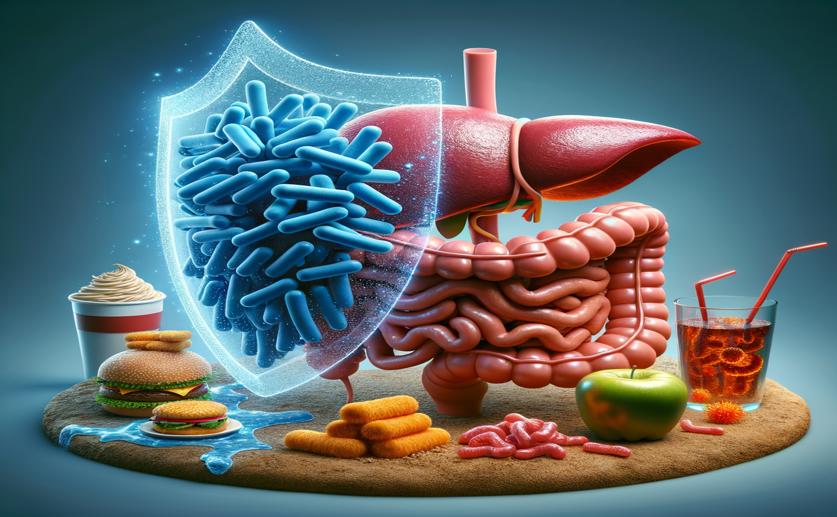
Gut Bacteria Protects Against High-Fat Diet-Induced Fatty Liver Disease
Jenn Hoskins
6th June, 2024

Image Source: Natural Science News, 2024
Key Findings
- Researchers from Xi'an Jiaotong University Health Science Center found that NAFLD patients have significantly lower levels of the bacterium Coprococcus
- Administering Coprococcus to mice on a high-fat diet reversed liver lipid accumulation, inflammation, and fibrosis
- This study suggests Coprococcus could be a promising probiotic for preventing and treating NAFLD in humans
HealthFitness And DietAnimal Science
References
Main Study
1) Coprococcus protects against high-fat diet-induced nonalcoholic fatty liver disease in mice.
Published 3rd June, 2024
https://doi.org/10.1093/jambio/lxae125
Related Studies
2) Randomized, Double-blind, Placebo-controlled Study of a Multispecies Probiotic Mixture in Nonalcoholic Fatty Liver Disease.
3) Lower gut microbiome diversity and higher abundance of proinflammatory genus Collinsella are associated with biopsy-proven nonalcoholic steatohepatitis.
4) An integrated analysis of fecal microbiome and metabolomic features distinguish non-cirrhotic NASH from healthy control populations.
5) Gut bacteria alleviate smoking-related NASH by degrading gut nicotine.



 30th May, 2024 | Jim Crocker
30th May, 2024 | Jim Crocker